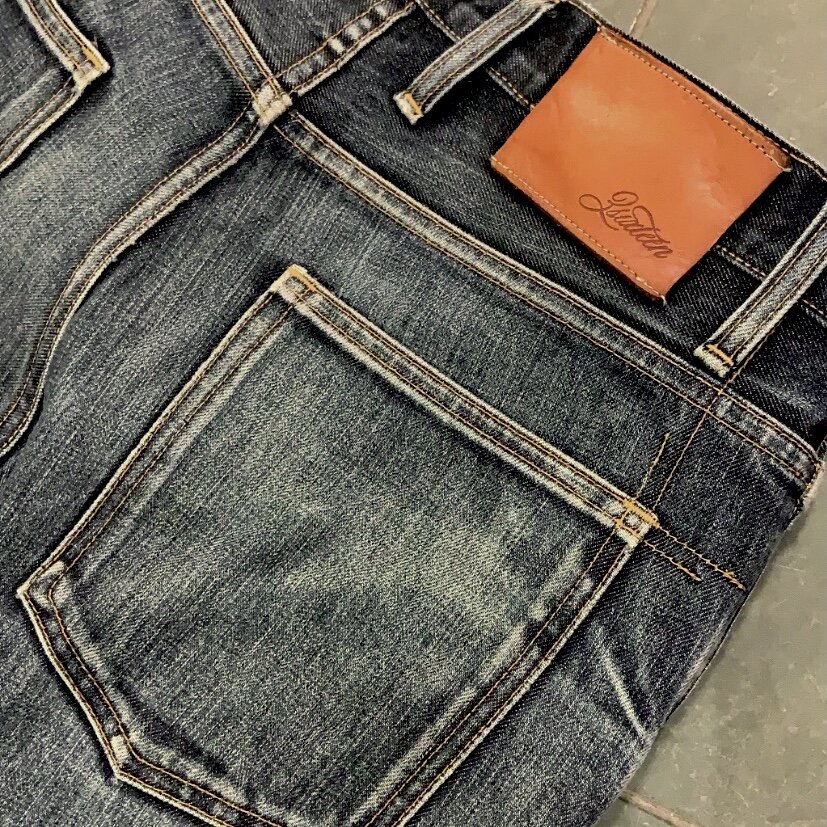Denim debate: raw versus stretch jeans
If you’re a snob about your blue jeans, then there’s a few criteria you definitely want checked off. The fabric comes from a handful of specialized Japanese mills, woven from pure cotton (even better if it’s Zimbabwe) into a raw state. Obviously, there’s a selvedge edge on the outseam. You buy them a little tight in the waist because you know they’ll stretch out. And you perhaps expect a bit of shrink after the first wash. If they come unhemmed, you’ll have them cut to length and finished with a chainstitch hem. You wear them constantly for months to the point where they stink so bad you absolutely must wash them. And only then do you begin to see the fruits of your labor with those glorious fades and honeycombs.
To anyone that hasn’t taken the raw denim journey themselves, that paragraph sounds like pure lunacy. And frankly, raw denim is the kind of insane product that you would never expect there to be a market for — let alone a fairly competitive and vibrant one. No part of that sounds consumer friendly at all.
Regardless, raw denim persists and I’ve seen the fruits of those labors myself. This past year my first pair of 3Sixteen jeans reached the 8-year mark and it was time to retire them. I’d grown a bit chunkier and consequently wasn’t wearing them as they were too tight in all the wrong places. I’d grown fond of the fades, but after posting them on Instagram, 3Sixteen asked if they could join the company’s private archive. So, I sent the off. It felt like hearing your pet dog went to go live on a farm upstate.
Currently, my most-worn jeans are trimmer and stretchier. I’ve bought several from various brands. Some have a selvedge outseam, some don’t. And the ones I reach for the most now aren’t raw. I hate to say it as a recovering denim snob, but I’m over “earning” the fades and comfort of a well-worn raw denim jean. Just give me something cozy.
I’m not alone. In fact, I never sold a raw denim jean when I worked at my last job (and I sold a lot of jeans). Less than a handful of customers I helped over several years even asked about them. The average customer just wants straight up comfort — heritage Japanese looms be damned.
I think this attitude comes from the fact that jeans are no longer rugged workwear items. These aren’t dungarees worn by guys in mines — they’re fashion pieces that have made their way up the social ladder to business casual office cubicles. Instead of patching and darning jeans as they tear and develop holes, they’re simply replaced with new pairs.
Perhaps the ultimate coup is jeans being worn with tailored jackets. Popularized by the likes of Andy Warhol and Ralph Lauren, I think an argument can be made this is a uniquely American contribution to men’s fashion. Menswear purists — basically another type of clothing snob — can hate it all they want, but just visit any airport or restaurant in a decent sized city and you’ll see this high-low hybrid. Jeans have been elevated to “dressy” status, but guys still want that comfort factor.
I’ll admit to succumbing to the siren call. I love wearing stretchy jeans while traveling on an airplane. You can wear them a bit slimmer (which I’m fortunate that such a look is still flattering for me) because of the elastane. And there’s no shortage of options on the market at a variety of prices.
I did end up buying another pair of 3Sixteen jeans, the CT-101x model. It’s a lighter weight fabric. They’ve also been washed and tumble dried once for a broken in feel that’s softer out of gate. It might be the perfect compromise. I’ll check back in another 8 years and let you know how it fades.

